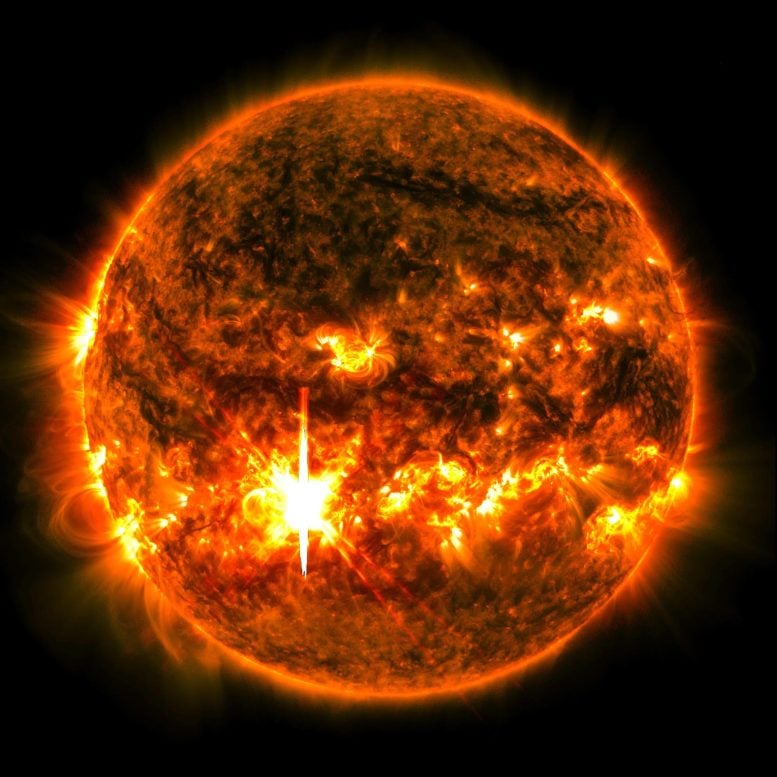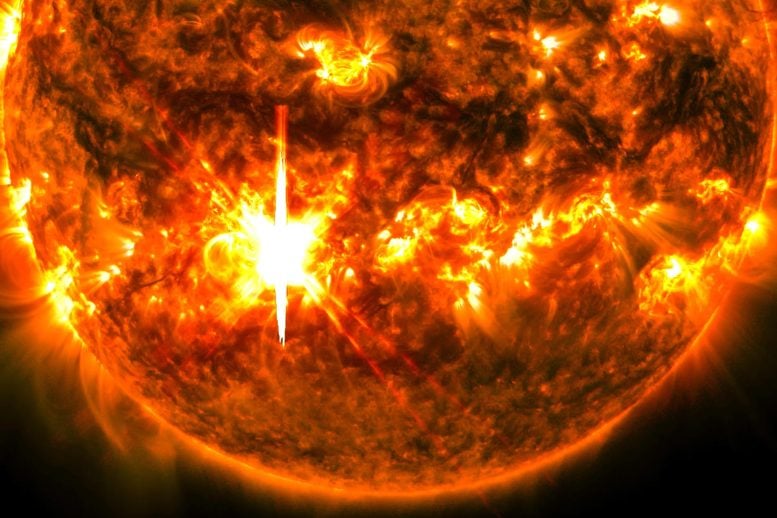

On October 1, 2024, a powerful X7.1 solar flare was captured by NASA’s Solar Dynamics Observatory, hitting its peak at 6:20 p.m. ET. This significant solar event ranks as the second most powerful flare of the current Solar Cycle 25, which started in December 2019 and was previously topped only by an X8.7 flare in May 2024.
Solar flares are intense bursts of radiation emanating from the release of magnetic energy associated with sunspots. They are classified based on their brightness in the X-ray wavelengths observed by satellites, with classes ranging from A, B, C, M, to X, with each class representing a tenfold increase in energy output. A-class flares are the smallest, having little effect on Earth, while X-class flares are the largest and can cause planet-wide radio blackouts and long-lasting radiation storms.

The classification system not only labels flares by their X-ray brightness but also includes a numerical suffix that provides more information about their strength. For instance, an X2 flare is twice as intense as an X1 flare, and an X3 is three times as intense. This granular classification helps researchers and space weather forecasters assess potential impacts on Earth and technological systems. During periods of heightened solar activity, typically at the peak of the Sun’s 11-year solar cycle, the frequency and intensity of flares increase, making monitoring and classification even more critical.
Agencies like NASA and NOAA keep a constant watch on the Sun’s activity through various space-based observatories. This vigilant monitoring is crucial to forecast and mitigate the effects of solar flares on space-borne and ground-based technological systems, ensuring safety and continuity in our increasingly technology-dependent world.

NASA’s Solar Dynamics Observatory (SDO) is a mission dedicated to observing the Sun and its behavior continuously. Launched on February 11, 2010, as part of the Living With a Star (LWS) program, the SDO aims to provide a deeper understanding of the Sun’s influence on Earth and Near-Earth space by studying the solar atmosphere across multiple wavelengths. The primary goal is to learn more about the Sun’s magnetic field and how it generates the solar wind, solar flares, and other space weather phenomena that can impact life and technology on Earth.
The SDO spacecraft is equipped with a suite of instruments that capture high-resolution images of the Sun in 13 different wavelengths every 12 seconds, offering unprecedented insights into solar activities. Key instruments include the Helioseismic and Magnetic Imager (HMI), which maps the solar magnetic field and studies the photonic forces at work in the solar interior; the Atmospheric Imaging Assembly (AIA), which photographs the solar atmosphere in multiple wavelengths to better understand the connectivity between the Sun’s surface and atmosphere; and the Extreme Ultraviolet Variability Experiment (EVE), which measures the Sun’s ultraviolet output and provides crucial data on how it affects Earth’s atmosphere. Through these advanced tools, SDO plays a vital role in our understanding of the Sun’s complex system and helps improve our ability to forecast space weather events.